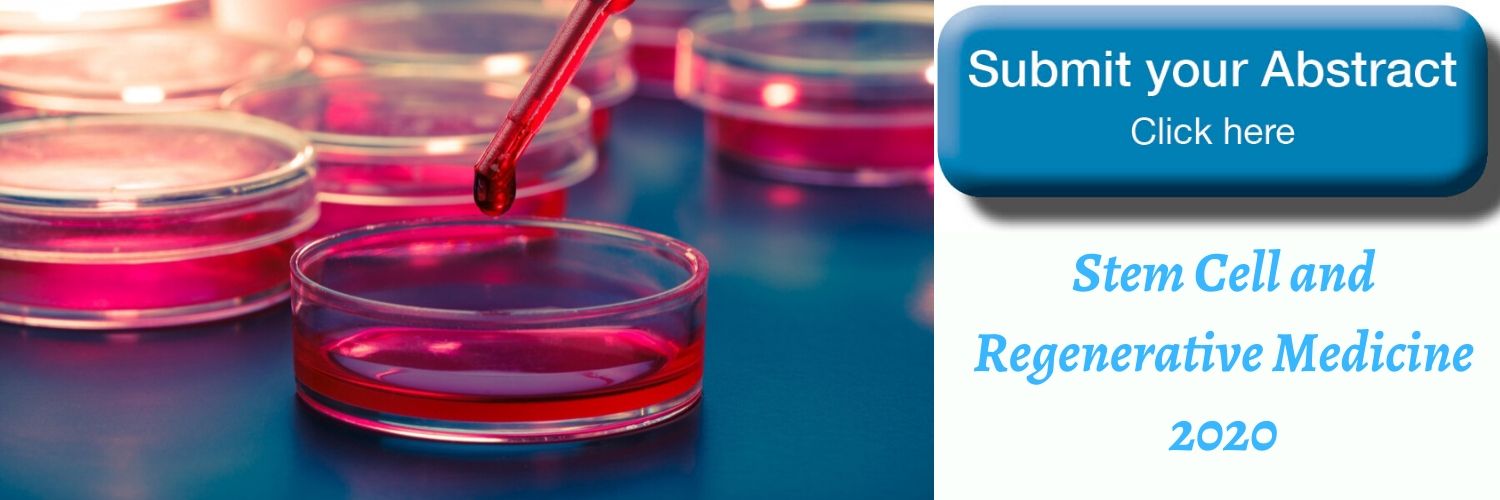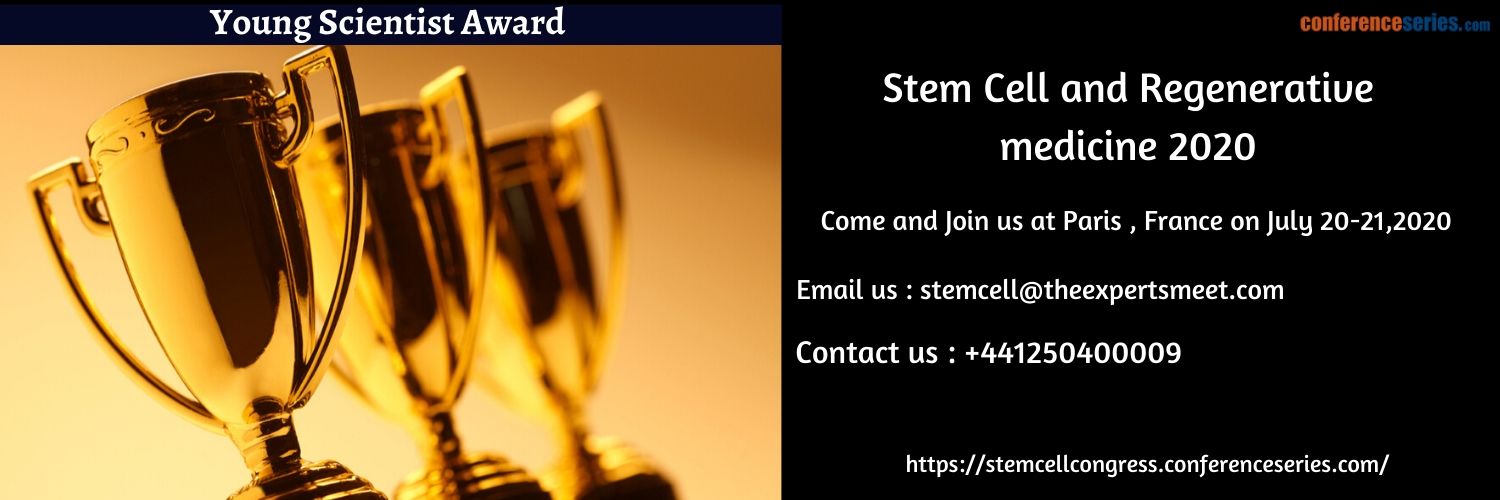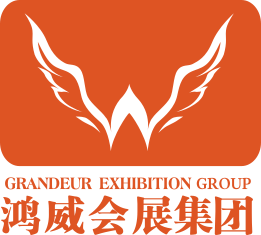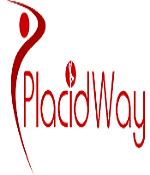Theme: Stem Cells: Innovations and Applications
Stem Cell Congress - 2020
We cordially welcome all the global participants to the 14th International Conference of Stem Cell and Regenerative Medicine which will be held during September 24-25, 2020 carrying the theme as 'Stem Cells: Innovations and Applications’ in Paris, France this social gathering is an opportunity to get connected with the top researchers of the world in the fields of Stem Cell Researches, Genetics, Biotechnology, Pharmaceuticals, etc.
Stem cell 2020 warmly welcomes the researchers and developers, professionals who are studying or analyzing in the fields of Stem Cell, Genetics, Regenerative Medicine, Cell Biology, etc., and other associated organizations to participate in the event and grasp knowledge about the recent researches regarding stem cell and regenerative medicine and their analysis. This conference will consist of the keynote talks, session talks, oral presentations, poster presentations, B2B networking etc. The aim of this global conference is to promote the recent advances in Stem Cell Therapy Research with its applications as well as the cell and gene therapy which stands as the new therapeutic approaches. The conference will also support and motivate the young researches in the fields of Stem Cells and Genetics Research to meet the new advancements.
We sincerely hope that Stem cell 2020 would serve as an international platform, creating new opportunities in the Stem Cell and Regenerative Medicine Research.
Why to attend the Conference:
Presenting your ideas and work gives you new perspective about work as people may ask questions that make you think about your project differently. Gaining expert knowledge, exchanging views and information and allowing them to discuss tomorrow’s challenges in Stem Cells. This event emphasizes at bringing the advancements in the fields of regenerative Medicine, Stem cells and related fields.
Who should attend?
We welcome all Individuals representing academia, public health researchers and practitioners, Stem cell researchers, Biology-practitioners, Immunologists & Microbiologist, pharmacists, psychologists, behavioral researchers, Health care professionals, social scientists, epidemiologists, social workers, students, Researchers, Academicians, Practitioners, Early Career Scholars, students along with Industries and others engaged in endeavors related to Regenerative Medicine and Stem Cell research and business. We also invite industry scientists who are interested in targets for novel therapies. This is an excellent forum for informal networking and meeting potential collaborators.
Session 1: Stem Cell Developers and Investigators
A cell having ability to develop into specialized cell types in body which replace the damaged or lost cells or tissues. Generally, natural stem cells are classified into embryonic stem cells and adult stem cells and the type of stem cells are reprogrammed in the laboratory are Induced Pluripotent Stem Cell. Basing on the efficiency or potency stem cells are classified into Totipotent, Multipotent, Pluripotent, Oligopotent, Unipotent. Stem cell therapy or regenerative medicine is the treatment method which develops methods to regrow repair or replace damaged or diseased cells, organs or tissues.
Session 2: Tissue Engineering and 3D Cell Culture
The procedure in which the cells are grown in an artificial environment separate from the body is called tissue engineering. It is an improvisation of growing cells than methods of 2D cell culture. The cells growing in 3D artificial environment are more relevant and effective than the cells growing in the 2D surface. The basic method of the 3D cell culture leads to the use of scaffolds which are the engineered materials which leads to cellular interaction in new tissues to be functional.While most meanings of tissue building spread a wide scope of utilizations, practically speaking the term is firmly connected with applications that fix or supplant parts of or entire tissues.
Session 3: Gene and Cell Therapy
Gene therapy is a way to treat the genetic disorders. The variation in gene therapy is focused on somatic gene therapy and germ line gene therapy relating with viral and non-viral vectors. T-cells are the type of lymphocyte cells which are developed in the laboratory to attack the cancer cells. T-cell therapy is nothing but an immune therapy to treat certain kinds of cancer. The nano therapy is a new trend in the field of medicine which uses nanoparticles to delivery drugs to the targeted body part.
Session 4: Ageing Theories in Stem Cell
Ageing is the complex process of deterioration of body functions through involvement of body cells and organs. Basically the ageing theory can be divided into two types – hematopoietic stem cell ageing and hair follicle stem cell ageing. Besides these two theories, the other theories of ageing are evolutionary theory, cellular theory, system theory and molecular theory. With ageing the bone marrow cellularity decreases.The foundational microorganism hypothesis of maturing hypothesizes that the maturing procedure is the consequence of the powerlessness of different kinds of immature microorganisms to keep on renewing the tissues of a living being with useful separated cells equipped for keeping up that tissue's unique capacity.
Session 5: Epigenetics and Stem Biology
The study of heritable phenotypic change which does not involve any change or alteration in DNA sequencing is known as Epigenetics. These changes make modification in certain gene activities like histone modification, adding a methyl group to a part of a DNA molecule. The DNA alterations are not termed as genetic, rather they are called epigenetic.Early stage immature microorganisms are fit for self-restoring and separating to the ideal destiny relying upon its situation inside the body. Epigenetics has been utilized to allude to changes in quality articulation, which are heritable through adjustments not influencing the DNA arrangement.
Session 6: Stem Cell Apoptosis and Signal Transduction
Apoptosis is the cell death which leads to a programming sequence of the elimination of old, unnecessary, unhealthy cells. This process is also known as cell suicide. When a cell commits suicide then the caspases become active. The signal transduction is a process in which the signals are transferred in an organism across the cells. In this process the proteins are termed as the receptors. The protein receptor gets signal through a primary messenger and then, undergoes conformational changes which changes its shape and interacts with molecules surrounding it.
Session 7: Genome Editing Technology
Genome altering, or genome building, or quality altering, is a sort of hereditary designing where DNA is embedded, erased, adjusted or supplanted in the genome of a living life form. Not at all like early hereditary designing strategies that arbitrarily embeds hereditary material into a host genome, genome altering focuses on the additions to site explicit areas.The technology which makes specific changes in the DNA of a cell. Genome editing depends on the double strand DNA break which has two major pathway mechanisms – non-homologous end joining (NHEJ) and homologous directed repair (HDR). The genome editing technology heads with the processes like CRISPR, TALEN, ZNF and MAGE.
Session 8: Stem Cell Transplants for Cancer Treatment
In a typical stem cell transplant for cancer terribly high doses of chemo are used, sometimes in conjunction with radiotherapy to undertake to kill all the cancer cells. This treatment additionally kills the stem cells within the bone marrow. Soon after treatment, stem cells are given to exchange those that were destroyed. These stem cells are given into a vein, very similar to a blood transfusion. Over time they settle within the bone marrow and start to grow and create healthy blood cells. This process is called engraftment.
Session 9: Tissue-Engineered Disease Models
Tissue remodeling is a technique of tissue engineering which involves restoration or reprogramming of tissues. It results in the maintenance and growth of the tissues. The cells which undergo pathological processes in observing the diseases of humans or animals is termed as organ models. Tissue engineering makes the improved format of modeling the phenotypes and screening the therapeutic solutions to the particular disease.
Session 10: Clinical Tissues Analysis
Clinical tissue analysis correlates with histopathology which involves the examination of tissues in order to manifest the diseases. The method requires the hematoxylin and eosin (H and E stain) to identify tissues. Tissue analysis includes the method called Automated Tissue Image Analysis which is a computer controlled method in clinical or medical science, pharmaceuticals, etc.
Session 11: Biomaterials and Biomedical Applications
The material or device or equipment required for treatment or for diagnosis is termed as a biomaterial. The biomaterials have broad application in the clinical or medical science. Hence, to study on biomaterials it is termed as biomaterial science and biomaterial engineering which is profoundly related with biomedical as well as research sector. The application of principles of biology and tools of engineering to create usable, tangible, economically viable products is termed as biomedical application of biomaterials.
Session 12: 3D Bio-Printing and Organ Printing
The 3D technique is a tissue imitating technology which combines cells and their growth factors along with biomaterials. It is used in printing tissues, cells, organs, etc. it requires bio-ink to print the tissues, cells and organs structurally layer-layer. The methods of 3D bio printing include Pre bio printing, Bio printing and Post bio printing. Organ printing is categorized as Drop-based Bio printing and Extrusion bio printing.Bioprinting can be utilized to print tissues and organs to help inquire about medications and pills. Notwithstanding, rising developments range from bioprinting of cells or extracellular network kept into a 3D gel layer by layer to deliver the ideal tissue or organ. Also, 3D bioprinting has started to fuse the printing of platforms. These platforms can be utilized to recover joints and tendons.
Session 13: Bioinformatics and Computational Biology
Bioinformatics and computational science are relevant orders enabling computational techniques to break down instinctive information and create calculations and scientific strategies by learning from different orders like software engineering, material science & measurements. This field is picking up significance in different research fields like Neural Networks. Subfields identified with this theme are computational pharmacology, computational immunology, computational disease science, computational neuroscience, and so forth this field is picking up significance in different research fields like Neural Networks. Subfields identified with this theme are computational immunology, computational pharmacology, computational neuroscience, computational disease science and so forth.
Market Growth of Stem Cell & Regenerative Medicine Research:
Global Market of Regenerative Medicines anticipated achieving USD 30,237 million by 2022.Current Research says that, Regenerative Medicine has opened several insights in the field of Health and Medicine and approaches to treat and cure complex degenerative, Neurological and genetic, acquired as well as hereditary disorder and to restore the function of tissues and cells in the damaged and missing organs by other therapies. North America takes the lead in global market in 2015 and expected to remain ascendant during 2015-2022. Stem Cell Therapies are also used to treat cancer and different immunodeficiency and Auto immune syndromes. And now Stem Cells are also stands as a new weapon against Neurodegenerative Diseases, cardiovascular Diseases. Eyesight syndromes, wound healing, spinal cord injury, etc.
The worldwide Stem cell & regenerative medicines market is functional with several parameters like product type, application, sources, geography and users. In focused to the product type stem cells market is divided into human embryonic stem cells, adult stem cells, IPsec’s, etc. Whereas, regenerative medicines applied the potential of these stem cells to regenerate, repair & replace tissues or the organ which are affected due to injury, natural aging process, and some diseases.
These novel approaches are able to restore the performance of cells & tissues and applied in broad range of fields starting form Tissue Engineering to cosmetic surgery therefore, now it seeks the central attraction of researchers to focuses on the new technologies like Utilization of Nano-materials in immunomodulation, drug delivery to make the growth in regenerative medicines market and blend it with stem cell culture to open new insights, possibilities which can bring evolution in the field of medicine.
Market Study of Stem Cells & Regenerative Medicine:
Europe: The regenerative medicine & stem cells market is expected to reach USD 13.578 billion by 2022 from USD 5.06 billion in 2016 at a CAGR of 21.80% during the period 2016-2022.
Middle East: The regenerative medicines market is expected $ 40.55 billion revenue in 2022 from $ 17.03 billion revenue in 2016.
USA: The regenerative medicine & stem cell market is assuming to reach $38.70 billion by the year 2022 from $ 13.33 billion in 2016 at a CAGR of 23.56%.
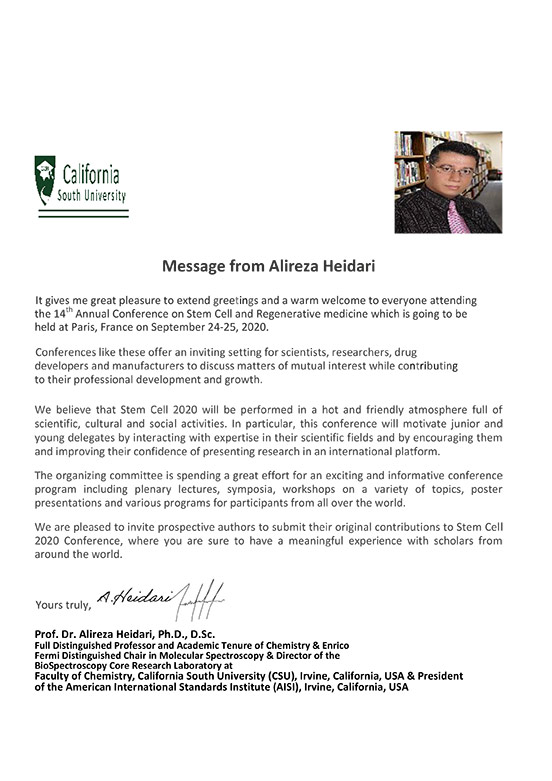
Conference Highlights
- Stem Cell Developers and Investigators
- Tissue Engineering and 3D Cell Culture
- Gene and Cell Therapy
- Ageing Theories in Stem Cell
- Epigenetics and Stem Biology
- Stem Cell Apoptosis and Signal Transduction
- Genome Editing Technology
- Stem Cell Transplants for Cancer Treatment
- Tissue-Engineered Disease Models
- Clinical Tissues Analysis
- Biomaterials and Biomedical Applications
- 3D Bio-Printing and Organ Printing
- Bioinformatics and Computational Biology
To share your views and research, please click here to register for the Conference.
To Collaborate Scientific Professionals around the World
| Conference Date | September 24-25, 2020 | ||
| Sponsors & Exhibitors |
|
||
| Speaker Opportunity Closed | Day 1 | Day 2 | |
| Poster Opportunity Closed | Click Here to View | ||
Useful Links
Special Issues
All accepted abstracts will be published in respective Our International Journals.
- Journal of Molecular Biomarkers and Diagnosis
- Journal of Molecular and Genetic medicine
- Journal of Phylogenetics and Evolutionary biology
Abstracts will be provided with Digital Object Identifier by

